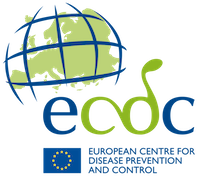A scoping review and survey on Evidence-to-Decision Frameworks in public health
Formulating evidence-based policies for public health is a complex task. Decision-making must explicitly consider the best available evidence, and contextual factors, as well as the insights of decision-makers, stakeholders, and affected populations. Transparent decision-making is crucial, as it builds public trust, ensures accountability, and enhances the effectiveness of policies.
Executive summary
Given the diverse factors influencing decisions, evidence-to-decision (EtD) frameworks help structure the process by addressing critical criteria relevant to any type of decision, including public health, clinical, or health system recommendations.
ECDC commissioned this report to support the revision of its internal scientific advice process. Initiated in 2023, the revision considered lessons from the COVID-19 pandemic and the expansion of the agency’s mandate to include providing science-based recommendations for preventing and controlling communicable diseases in the European Union (EU). The objective of the review was to identify EtD or similar structured tools that facilitate the translation of evidence into conclusions, recommendations or actionable decisions. We were particularly interested in finding practical examples of such tools’ application in decision-making processes related to infectious disease prevention and control.
Following the pandemic, the EU expressed a strong commitment to both strengthen the decision-making process with defined and transparent processes and to bridge science and policy in a more organised and integrated manner to increase trust and engage the public.
The aim of this scoping review is to identify existing EtD frameworks, the criteria used by the frameworks to guide decision-making, and highlight experiences with those frameworks.
We conducted an electronic search in MEDLINE and Health Systems Evidence for literature published between January 2013 and December 2022, with two reviewers conducting the selection process. We also searched the websites of relevant organisations, conducted a citation search of the included references, and contacted key organisations.
We identified 15 frameworks, of which seven had a generic scope, two were focused on specific infectious disease topics (immunisation, COVID-19), and six were focused on non-infectious diseases. The frameworks assessed a median of five criteria, with the most frequent being related to ‘desirable effects’, ‘resources
considerations’, and ‘feasibility’. Stakeholder engagement was specifically mentioned as a main criterion by three of the frameworks. Examples of use in the area of infectious diseases were only found for four of the frameworks, with only two also having documented experience on their use (GRADE EtD, WHO-INTEGRATE).
We conclude that the findings of this review support, and should be used to promote, the broader use of EtD frameworks to: guide public health decision-making by making explicit critical decision-relevant questions and criteria; increase the transparency of the decision-making process; and support clear communication. This should be accompanied by systematic reporting and sharing of users’ experience, to support the implementation of such frameworks by facilitating mutual learning and identifying areas that require development to further strengthen their utility in different contexts to address different needs.
Download





